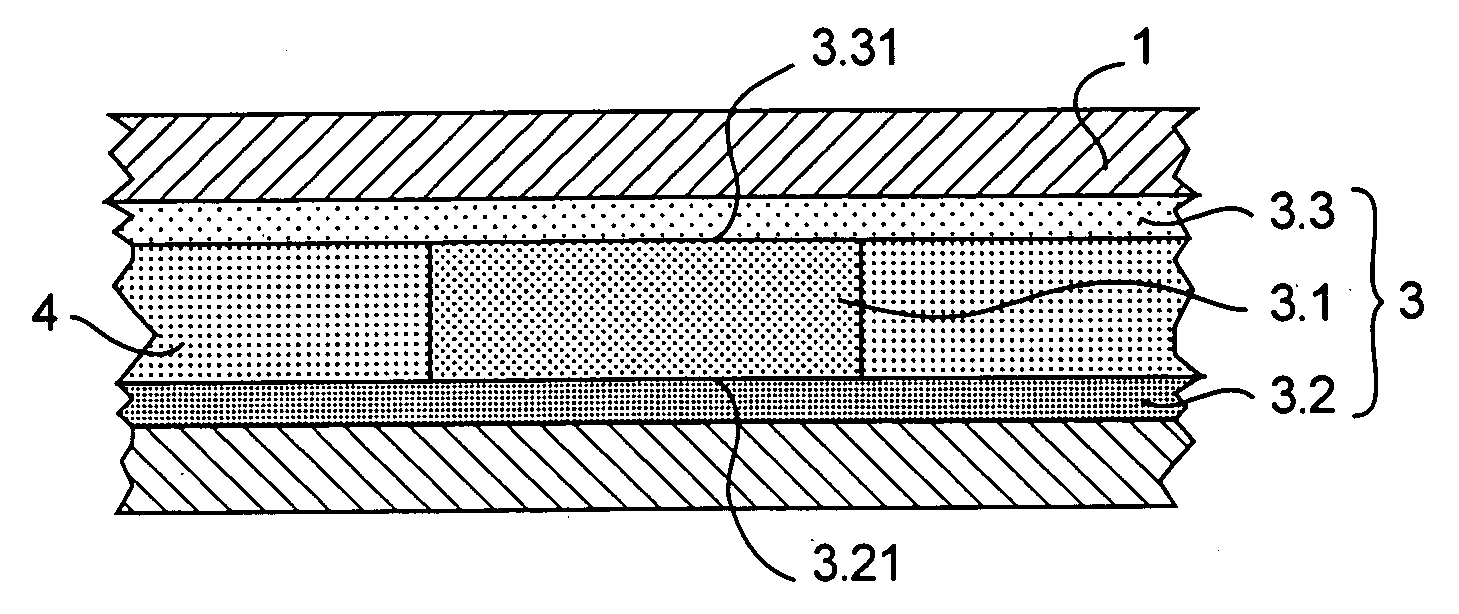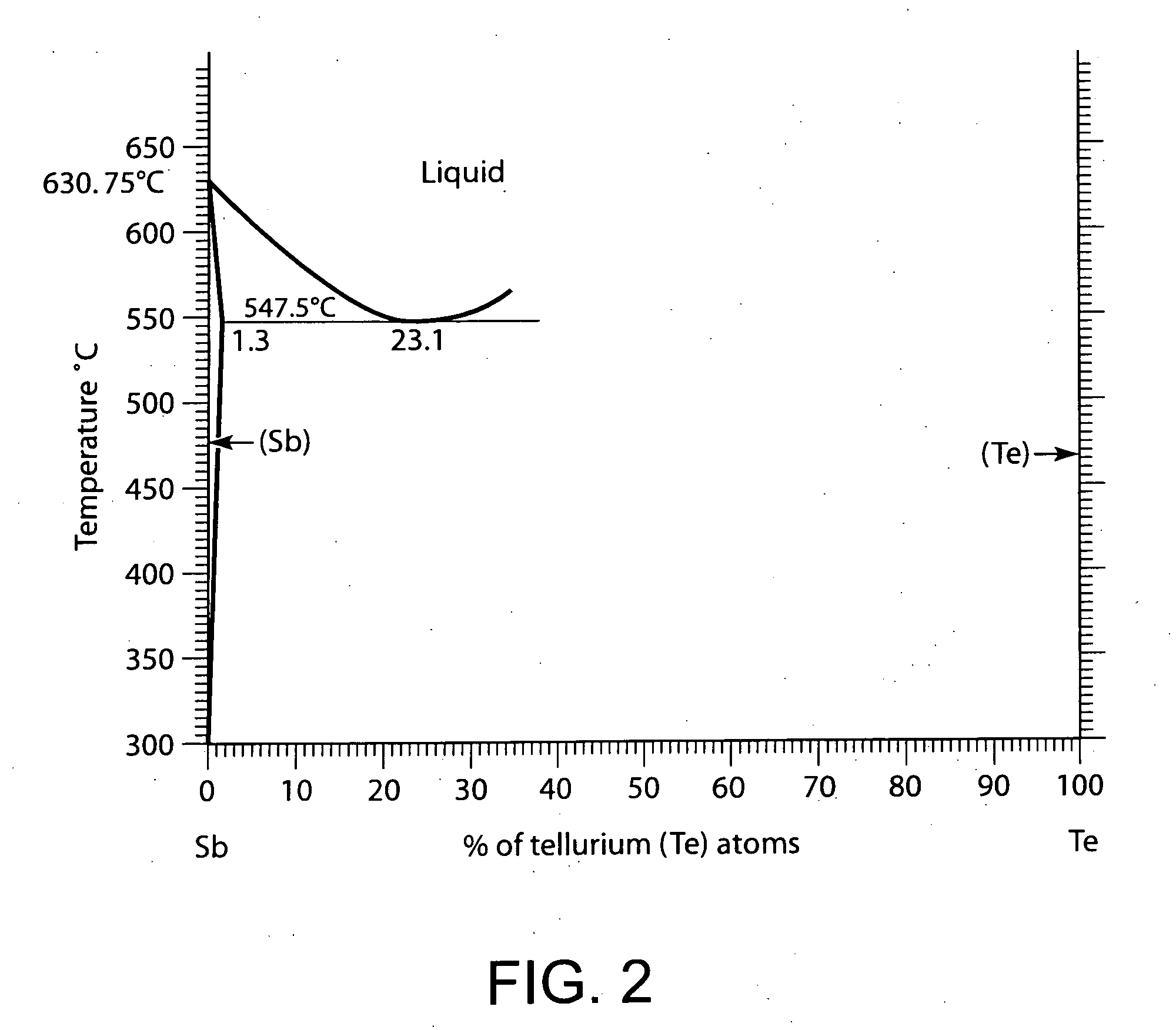Phase change memory element with improved cyclability
- Summary
- Abstract
- Description
- Claims
- Application Information
AI Technical Summary
Benefits of technology
Problems solved by technology
Method used
Image
Examples
Embodiment Construction
[0068] Reference will now be made to the phase-change memory cell according to the invention as illustrated in FIG. 1A or in FIG. 1B. This memory cell includes two spaced-out electrical contacts 1, 2, one of which is intended to be brought to a more positive potential than the other. Both spaced-out contacts 1, 2 are separated by a portion 3 in a phase-change memory material from the chalcogenide family. The electrical contacts 1, 2 are intended to be brought to different potentials during the write cycles of the memory cell. The portion 3 in a phase-change memory material assumes the shape of a stack with a so-called active central area 3.1 sandwiched between two so-called passive outmost areas 3.2, 3.3. There exists between the central area 3.1 and each of the outmost areas 3.2, 3.3, an interface referenced as 3.21 and 3.31, respectively. According to the invention, these interfaces 3.21, 3.31 are inert or quasi-inert from the physico-chemical point of view. The definition of the ...
PUM
 Login to View More
Login to View More Abstract
Description
Claims
Application Information
 Login to View More
Login to View More - R&D
- Intellectual Property
- Life Sciences
- Materials
- Tech Scout
- Unparalleled Data Quality
- Higher Quality Content
- 60% Fewer Hallucinations
Browse by: Latest US Patents, China's latest patents, Technical Efficacy Thesaurus, Application Domain, Technology Topic, Popular Technical Reports.
© 2025 PatSnap. All rights reserved.Legal|Privacy policy|Modern Slavery Act Transparency Statement|Sitemap|About US| Contact US: help@patsnap.com



